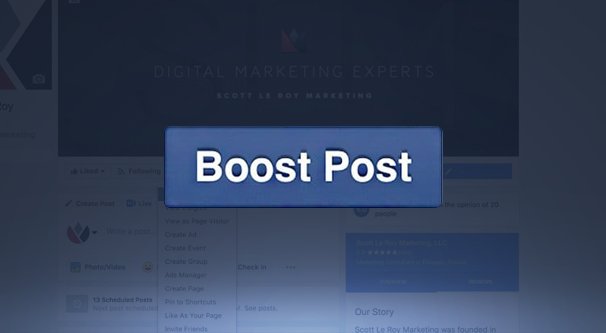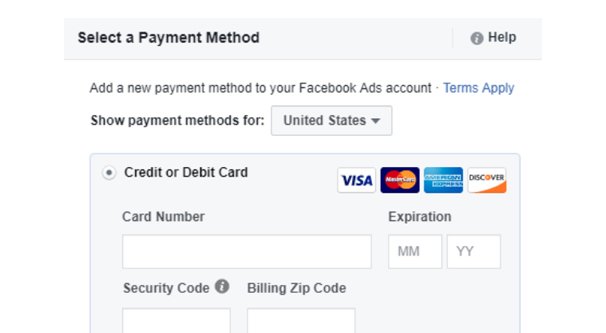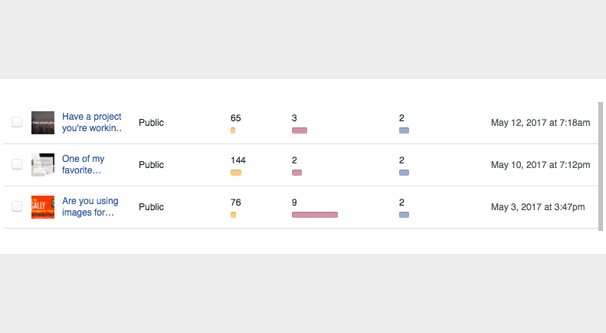Should You Boost Every Post on Your Facebook Page?

The ability to boost posts on Facebook is a potentially powerful tool, but there are a lot of myths and misconceptions surrounding it.
One myth I’ve seen is that you should boost every post you make as a brand page. I’ve been asked before if this is true, or if this is a viable strategy, so let’s talk about it.
What Boosting Does
First up, let’s talk about what boosting a post does. When you click the “boost post” button on a post on Facebook, Facebook converts that post into a promoted post. Essentially, it turns an organic post into a paid post.
Boosting a post is limited, however, and you don’t get all of the usual benefits of creating a Facebook ad as a promoted post. You miss out on some of the benefits of a chosen call to action, you aren’t able to choose ad objectives, budgeting strategies, or audience targeting, and so on.
For a more detailed rundown on the differences between boosting posts and running promoted post ads, you can read this article.
Now, just because boosting a post isn’t as good as creating an ad, doesn’t mean boosting a post is worthless. It’s basically an introduction to Facebook advertising, and more importantly, to the returns you can get from spending some money.
Boosting posts converts money into more exposure to those posts. Those posts will then, consequently, have higher engagement, higher numbers of comments, and potentially more link clicks and even page follows. Once you get a taste of the results, Facebook hopes, you’ll be more inclined to dig into Facebook ads.
Another more modern quirk of boosting posts is that Facebook now records the ads your page runs, and makes that information publicly visible. It’s part of their push for more accountability. This means that, when you boost a post, that post will show up in the ads directory for your page.
Potential Problems with Boosting Posts
Boosting posts is not without a few potential problems.
First of all, boosting posts is running posts as ads. You have to spend money to boost posts, and the more money you put into it, the more returns you will get. Thus, boosting posts can get expensive if you want to get a lot of results from a sub-par or unoptimized post.
Another quirk about boosted posts is that, once a post has been boosted, you can’t edit it. This is because, like ads, the post has to go through the Facebook approval process. Facebook approves the post as it is, but if you boost a post and the notice a typo later, you’re out of luck. All you can do is cancel and delete the post, re-create the post, and try again.
You’ll also discover that Facebook lies. They’ll give you an estimate for the number of people your post can reach when you boost it, but those numbers are basically pulled out of thin air. That’s in part why they try to give you a pretty broad range, to entice you to spend to reach the upper ends, when you’re pretty unlikely to do so. Boosted posts almost never reach the number of people they claim they will.
Another drawback to using the boost post feature is that the ads are inherently time-limited. You can cancel a boost early if the post isn’t performing well enough for you, but you can’t extend the time you’re boosting a post if that post is doing well. There’s an upper limit to the amount of time you can keep a post running as a boost.
Many of these problems can be solved in some way or another, but it requires actually using the Facebook ads system instead of the easy button, and that’s not always what you want to do. It might be better to simply hire a Facebook ads agency instead.
What Happens If You Boost Every Post
So let’s say you’ve bought into the myth. You heard someone say that boosting every post is a good idea. After all, if you get more exposure to your posts when you boost them, if you boost everything, you’ll have greater numbers across the board! What’s not to love?
At first, you’ll see an improvement to the engagement numbers on your posts. Not necessarily the rates, but the numbers. Yes, boosting posts will bring in engagement, comments, clicks, and possibly even followers. It’s not technically guaranteed, but the fact is, there will always be people willing to engage with your posts. Whether or not those are the right people to be engaging with your posts is another story, of course.
Note that I say numbers, not rates. If your average post is seen by 100 people and gets 5 comments, that’s a 5% engagement rate. If you boost the post and get 10 comments on it, that’s twice as many comments, but if the boosted post was shown to 500 people, your engagement rate has dropped to 2%. Of course, you’re paying for that exposure, not for the engagement, but it’s easy to forget that engagement rates are important.
You might encounter some posts that can’t be boosted. For example, when you post a new cover image for your Facebook page, it is typically posted as a new image post, but Facebook does not allow you to boost it. They also won’t allow you to boost posts like notes or albums, which might be common if you’re a media-heavy organization.
Eventually, you’ll find that the numbers get worse. Boosting posts is something of a novelty, and it will eventually wear off. In part, this is because the people who would see your posts because of the boost have already seen them because of their past interactions with you. In part, it may be because your posts are more “normal” and not ad-driven calls to action, so the urge to comment drops off. Sooner or later, the “new normal” drops down and settles into a routine.
You’ll encounter delays on giving your posts exposure, because every post has to go through approval. Since Facebook has to review every post, you’re subject to the delays and whims of the Facebook systems. The automated processes can be gummed up on particular days as businesses submit ads for upcoming holidays, for example, and the manual reviews may fall behind as well. Sometimes a post just gets stuck in the system, too, and if you don’t notice right away, you can have quite a delay before that post ends up boosted.
Some posts will be denied as ads, and you’ll learn just how inconsistent and fickle Facebook can be. Maybe you used a word that Facebook doesn’t like. Maybe you’re linking to a site they don’t want to advertise. Maybe you’re somehow crossing a line. Maybe it’s just a bad day for one of the reviewers and they decide to push back a little on whatever post they don’t like that day. Sooner or later, some of your posts will be denied the boost, and there’s not really anything you can do about it. Meanwhile, those posts look like they perform worse, because their numbers are lower compared to the posts you’re able to boost.
All the while, you’ll be racking up charges on whatever credit card you’re using to boost your posts. Never forget that boosting posts costs money, and the more posts you boost, the more money you’re spending. Given Facebook’s billing practices, you might not even notice how much you’re racking up until it’s time to actually pay up. Unfortunately, there’s no way to get a refund from boosts that don’t perform or that went over budget. Requests for a refund are generally denied, and trying to initiate a chargeback with your credit card will just get your ads account, and possibly your business account, closed on you.
As more posts are boosted and your users start to wonder why, you may start to lose some followers. It’s one thing for posts with a purpose to be boosted, but it’s another for the basic status updates, user thanks, and other “filler” posts to have that push as well. Your users will wonder, and they’ll be able to recognize that you’re boosting everything. Some users might not want that much exposure in their feeds, and might unfollow or even block you to push back.
You may encounter more and more people starting to report your posts. Some people might not want to unfollow you, but they don’t like seeing everything you post, so they report some of your posts as spam, or they hide them. This kind of negative engagement impacts your future organic and paid distribution, and can hurt your account overall.
Eventually, you’ll simply realize that boosting every post is a fool’s errand. It wastes a lot of money and it doesn’t have very good returns on that investment. While it may be attractive for a few weeks or months, it won’t last forever. Luckily, there are alternatives.
What You Should Do Instead of Boosting Everything
The first thing you want to do is learn to ask yourself a few filtering questions before you consider boosting a post.
- Does your post have a goal or a purpose?
- Does your post have a clear, obvious call to action for users to follow?
- Does your post link to a landing page or other valuable destination?
- Are you going to get tangible, valuable results from your post?
If you can’t answer these questions in the affirmative, or otherwise explain the value of boosting a post beyond “the engagement numbers go up”, don’t boost the post.
Boosting a post should have a goal. You want to get new followers, you want to get new opt-ins for a newsletter, you want to get new claims on an offer, you want to get more sales. Something with value needs to come out of your expenditure. A lot of the basic posts you want to publish on your page don’t have this kind of goal, so they aren’t good candidates for boosting.
The other thing you want to do is familiarize yourself with Facebook ads. Boosting a post is fine as a basic, fast, simplified way to get more exposure to a post, but it’s not going to be the most effective use of your money.
Instead, you want to study your audience insights and learn the people who are most engaged with your business. Learn their demographics and interests, and learn how to target them.
Spend your money more effectively by creating Facebook ads with the same sort of copy as the organic posts you’re using as a base. You know your goal, or should; whether you want to get more followers, more sales, or something in between.
With these ads, you can leverage your knowledge about your audience to reach the people most likely to actually take action, rather than the boost post audience, which is “people most likely to engage with this post.” Run your ads, monitor how they perform, and work to optimize them.
Eventually, you’ll have graduated beyond the simplicity of the boost post and into the advanced benefits of Facebook ads, and can drop boosting entirely. Alternatively, you might decide the whole thing is too much cognitive load to learn yourself, and simply hire an expert to do the managing for you. Both are valid options, and a better use of your money than boosting posts.







